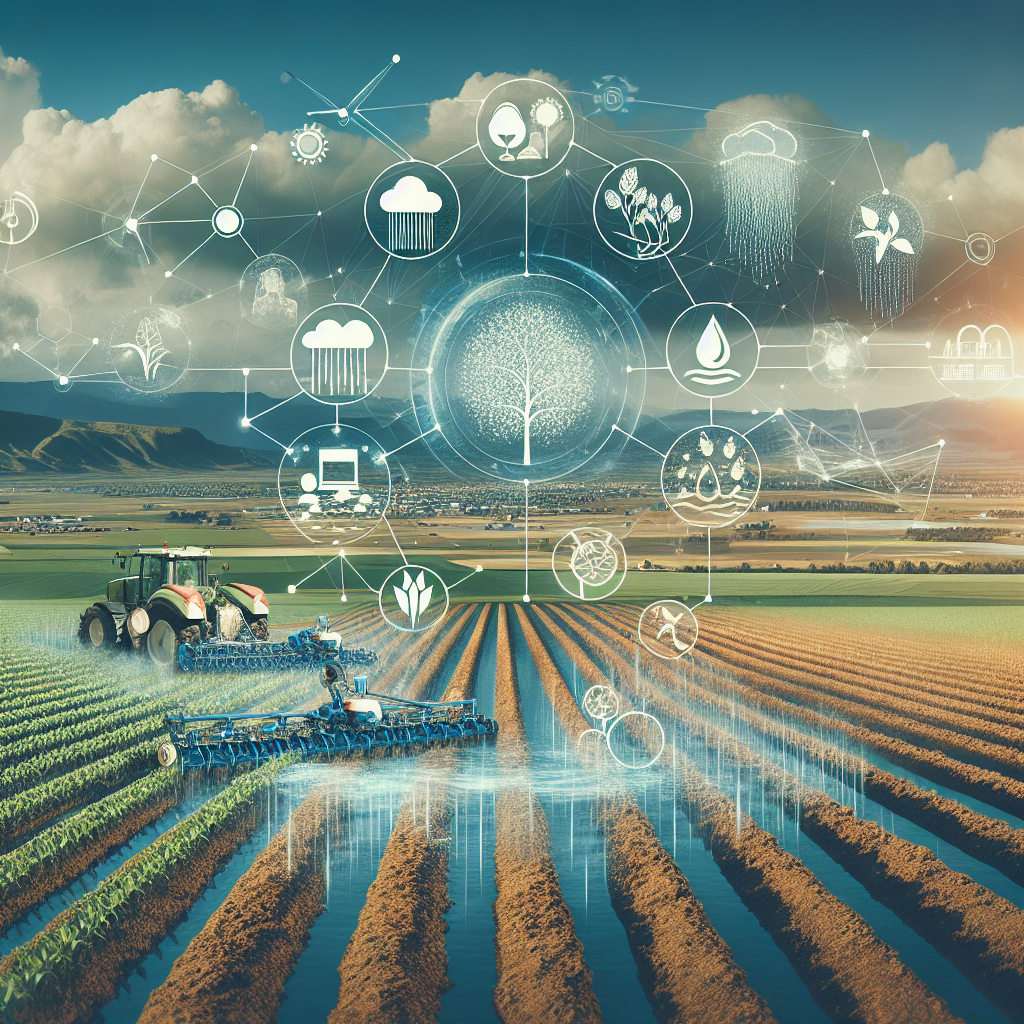The Risks of AI in Agriculture: Impacts on Food Security
Artificial Intelligence (AI) has revolutionized many industries, and agriculture is no exception. The use of AI in agriculture has the potential to increase efficiency, productivity, and sustainability. However, there are also risks associated with the widespread adoption of AI in agriculture, particularly when it comes to food security. In this article, we will explore the potential impacts of AI on food security and discuss the risks that need to be considered.
AI in Agriculture: A Game-Changer
AI technologies, such as machine learning, computer vision, and robotics, have the potential to transform agriculture in numerous ways. These technologies can help farmers make better decisions by analyzing large amounts of data, such as weather patterns, soil conditions, and crop yields. AI can also improve the efficiency of farming operations by automating tasks like planting, watering, and harvesting.
One of the key benefits of AI in agriculture is its ability to increase productivity. By using AI-powered tools, farmers can optimize their farming practices and maximize their yields. This can help address the growing demand for food as the global population continues to increase.
AI can also help improve sustainability in agriculture by reducing the use of resources such as water, fertilizer, and pesticides. By accurately predicting crop yields and identifying areas that need attention, farmers can minimize waste and environmental impact.
The Risks of AI in Agriculture
While AI has the potential to bring significant benefits to agriculture, there are also risks that need to be considered. One of the main risks is the potential impact on food security. Food security is defined as the availability, access, and utilization of food in a sustainable and equitable manner. AI has the potential to disrupt food security in several ways:
1. Job Displacement: One of the main risks of AI in agriculture is the displacement of human labor. As AI technologies become more advanced, they have the potential to replace human workers in farming operations. This could lead to job losses in rural communities, where agriculture is often a major source of employment. Displaced workers may struggle to find alternative employment opportunities, leading to economic hardship and food insecurity.
2. Access to Technology: Another risk of AI in agriculture is the unequal access to technology. Smallholder farmers in developing countries may not have the resources or technical expertise to adopt AI technologies. This could widen the gap between large commercial farms that can afford AI tools and small-scale farmers who are left behind. As a result, smallholder farmers may struggle to compete in the global market, leading to food insecurity in rural communities.
3. Data Privacy and Security: AI technologies rely on large amounts of data to make accurate predictions and recommendations. This data can include sensitive information about farmers, such as their crop yields, land holdings, and financial records. If this data falls into the wrong hands, it could be used for malicious purposes, such as identity theft or fraud. Farmers may also be at risk of losing control over their data, leading to concerns about privacy and security.
4. Environmental Impact: While AI has the potential to improve sustainability in agriculture, there are also risks associated with its environmental impact. For example, the increased use of AI-powered drones and robots could lead to higher energy consumption and carbon emissions. This could contribute to climate change and environmental degradation, undermining efforts to achieve food security in a sustainable manner.
5. Dependence on Technology: As AI becomes more prevalent in agriculture, there is a risk of farmers becoming overly dependent on technology. If AI systems fail or malfunction, farmers may struggle to manage their crops and livestock effectively. This could lead to crop failures, livestock deaths, and food shortages, jeopardizing food security in rural communities.
FAQs
Q: How can AI benefit food security in agriculture?
A: AI can benefit food security in agriculture by increasing productivity, improving sustainability, and optimizing resource use. By using AI-powered tools, farmers can make better decisions and maximize their yields, helping to address the growing demand for food.
Q: What are the risks of AI in agriculture?
A: The risks of AI in agriculture include job displacement, unequal access to technology, data privacy and security concerns, environmental impact, and dependence on technology. These risks can impact food security by disrupting farming operations and livelihoods.
Q: How can the risks of AI in agriculture be mitigated?
A: The risks of AI in agriculture can be mitigated through policies and regulations that promote equitable access to technology, protect data privacy and security, and promote sustainable farming practices. Stakeholders, including governments, farmers, and technology companies, must work together to address these risks and ensure food security for all.
In conclusion, AI has the potential to revolutionize agriculture and improve food security. However, there are risks that need to be considered, such as job displacement, unequal access to technology, data privacy and security concerns, environmental impact, and dependence on technology. By addressing these risks and promoting sustainable farming practices, we can harness the benefits of AI in agriculture while ensuring food security for all.

